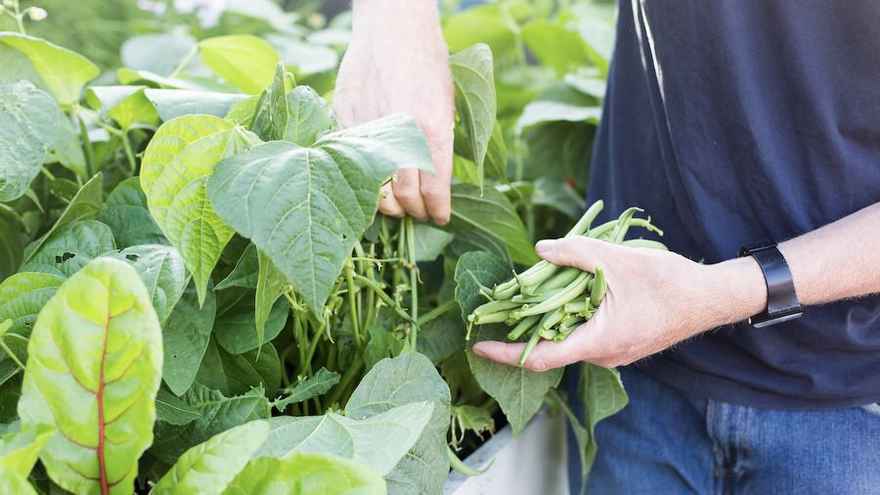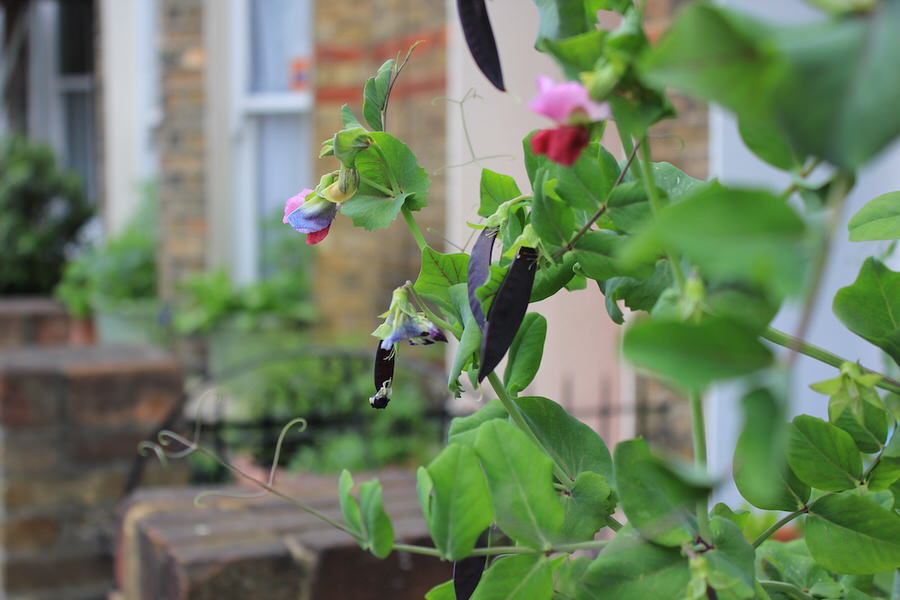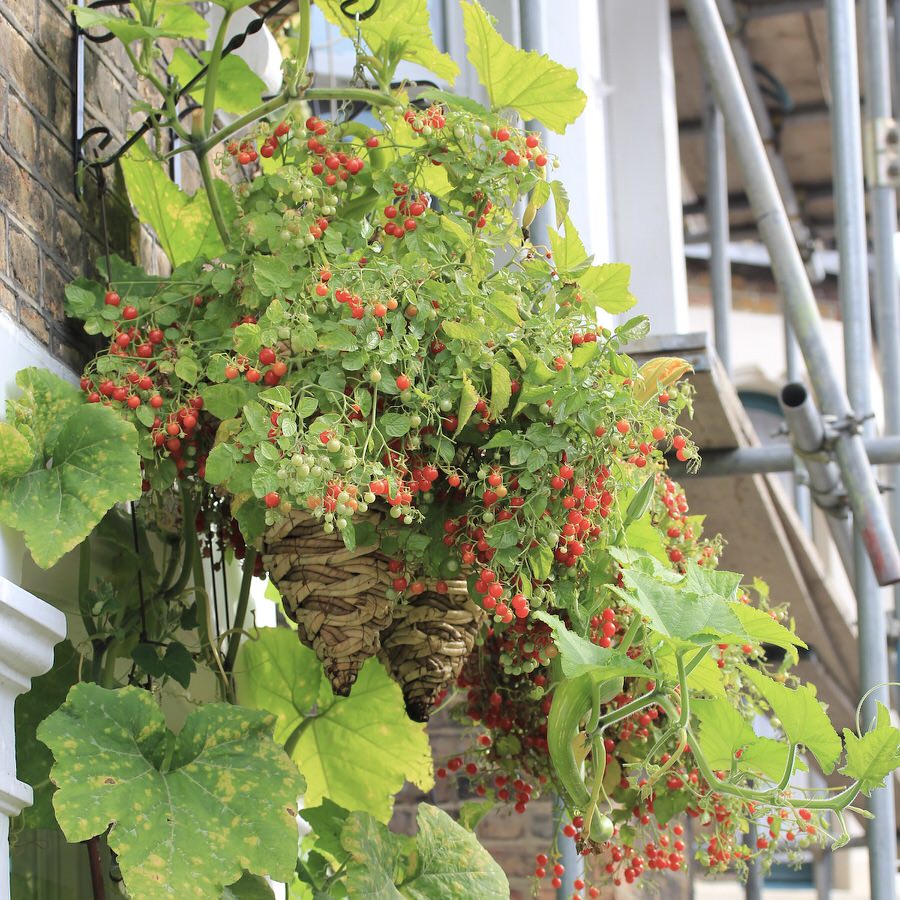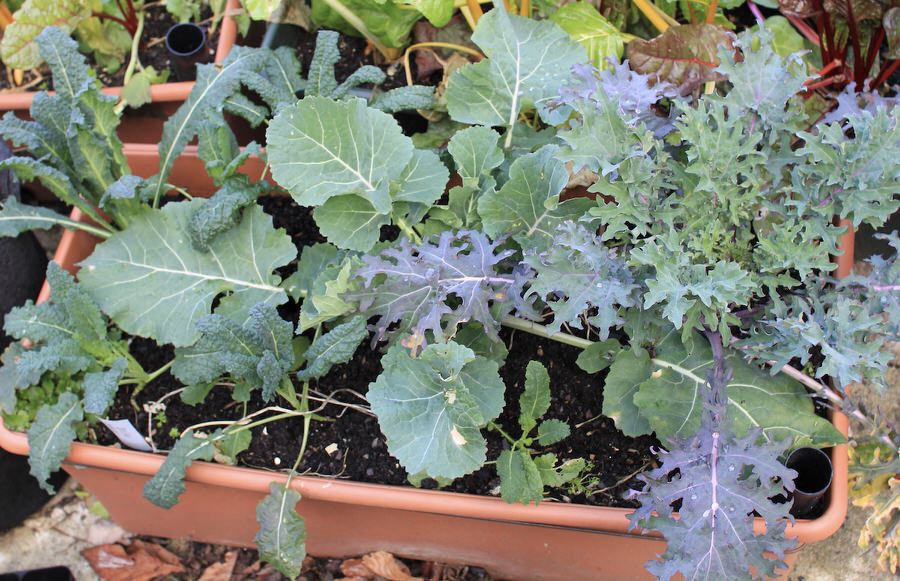Dwarf varieties are often marketed at container gardeners - but are they the best choice?

Miniature, 'compact', or 'dwarf' varieties of vegetables are often promoted as being ideal to grow in containers. But are they always the best choice for the container garden? Here are some thoughts and observations.
Beans
Let's start with beans. 'Dwarf' or 'Bush' beans (beans that grow into a, short, bushy habit) are often recommended for container gardening. But are they better than climbing French or string beans? My experience of dwarf varieties is:-
- Because of their bushy nature, they take up a lot more horizontal space than climbing beans. For example, while 12 to 14 climbing bean plants will grow happily in a veg crate (see photo below), only 6 to 8 (maximum) bush beans will. As a result, the yield per container from bush beans is usually much smaller.
- Many varieties of bush beans also produce beans over a shorter window of time than climbing beans. This is a trait that suits commercial growers who want to harvest all their crop in one go. But, as home gardeners, most of us prefer our veg to produce a steady crop over a longer period.
- Aesthetically, I really like the height that a tower of climbing beans adds to a container garden (see pic at top of page). A tall wigwam makes a statement, a beacon on the balcony or in the street that bush beans do not.
Conclusion? As a general rule, climbing bean varieties will usually give a better yield than bush beans from the same sized container, can often be picked over a longer period, and look stunning, too. However, bush beans are a good choice in windy spaces where tall plants can be blown over - or if you just find a bush variety you particularly want to grow.
 Left: dwarf bean varieties often all ripen at once rather than over several weeks. Right: 12 climbing beans will grow happily in this container - but only 6 - 8 dwarf beans are possible in the same container
Left: dwarf bean varieties often all ripen at once rather than over several weeks. Right: 12 climbing beans will grow happily in this container - but only 6 - 8 dwarf beans are possible in the same container
Peas
Climbing and dwarf peas both grow well in containers. The climbing ones can look super pretty when in blossom and there are some wonderful old heritage varieties to try. However, tall climbing peas can be harder to support in containers (they don't cling on to canes the same way as peas so need pea sticks or netting) and some do grow VERY tall. This means that shorter peas are often significantly easier to manage. In addition, short peas tend to be less bushy than dwarf beans, which means you can still squeeze a good number of plants into one container. And some shorter varieties can be almost as productive as the tall ones. Conclusion? Both climbing and dwarf varieties make a good choice, but on balance I'd probably recommend the shorter varieties (less than 6 feet tall) for being easier to manage.
 Tall climbing peas look really pretty but shorter varieties are productive, too.
Tall climbing peas look really pretty but shorter varieties are productive, too.
Fruiting Vegetables
With fruiting vegetables there's the size of the fruit to consider - and the size of the plant (the two aren't always related). As a general rule, the varieties that produce smaller fruits - especially tomatoes, peppers, squash and aubergines - are easier to grow and ripen in containers, particularly if growing in a cool climate like the UK. So go for cherry tomatoes instead of huge beef tomatoes. Lunchbox peppers instead of large peppers and smaller squash like kuri instead of large hubbard squash or pumpkins. That said, if you have plenty of sun and space for large pots, then beef tomatoes and big squash will grow fine in a container. So don't be afraid to give them a whirl. The size any plant grows will be restricted to some degree by the size of its container. However, for some fruiting veg, particularly tomatoes and courgettes, it makes sense to look for more compact varieties, particularly if growing in small containers. . For example, if you want to grow a tomato in a small pot like a hanging basket, you definitely want to choose a small variety of bush tomato, like 'cherry cascade' or 'balconi red' rather than a huge vining one. And, if grwoing courgettes / zucchine in a confined space, be aware that they can send out lots of big leaves that can quickly overshadow neighbouring containers. A compact courgette variety will help to reduce this problem. Conclusion? As a rough and ready rule, varieties that produce smaller fruit are usually easier to grow in containers. And compact varieties of some vegetables, particularly tomatoes and courgettes, are worth seeking out for smaller spaces.
 When choosing a tomato for a small container like a hanging basket, be sure to chose a smaller, compact variety like cherry cascade.
When choosing a tomato for a small container like a hanging basket, be sure to chose a smaller, compact variety like cherry cascade.
Leafy Crops
There's not a lot of benefit of choosing compact varieties of kale and other leafy crops. The constraints of growing in a container will naturally limit the size of any variety. For example, a Cavelo Nero kale will grow into a MUCH bigger plant in a large than a small container. So, as a general rule, choose leafy veg you like to eat and that are suited to your climate.  The size a kale plant will grow to is largely constrained by both the size of the pot and the amount of space in the pot each plant has.
The size a kale plant will grow to is largely constrained by both the size of the pot and the amount of space in the pot each plant has.
Conclusion
The size of plant is often not the most important trait to look for when choosing a variety for a productive container garden. Instead choose varieties primarily for their flavour, productivity and how well they grow in your climate and conditions. There are some occasions when compact varieties can be useful. For example, compact tomato and courgette can be a good choice for small pots and in confined spaces. So do consider the smaller varieties - just don't assume they are always the best choice for containers.
Your Turn
If you've grown any compact varieties you think are great (or not so great) or have any other views on the matter, it'd be great to hear from you in the comments.

2 comments
Leave a comment